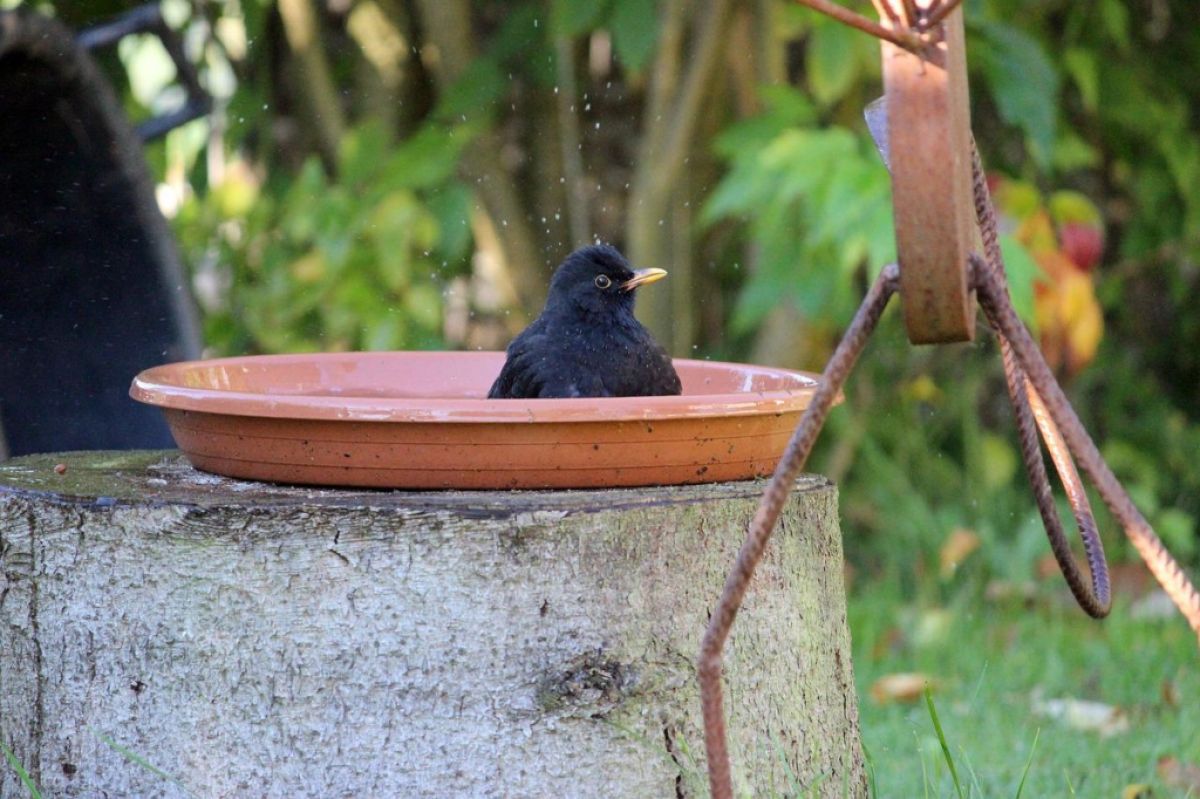If you welcome birds into your garden, you probably know that during the summer, water sources are very important to them. Place your birdbaths in the shade and clean them regularly to keep the water fresh. Have a few birdbaths in different parts of your yard, maybe one where you can see it through a window.
Some types of birds prefer ground level water sources also, so even a plant pot saucer can serve during hot days. You don't need feeders during the summer, but water is crucial in times of drought.
Also, some debris in a yard gives birds places to search for insects and grubs. Grow shrubs that produce seeds and fruit that will appeal to your feathered friends and plant a variety of natives that the birds enjoy during different times. For example, native viburnums such as those that attract birds as well as pollinators. They are host plants for the larvae of spring azure butterflies and hummingbird clearwing moths.
The Serviceberry arborea has flowers to attract insects and small fruits late spring early summer that are eagerly consumed by cedar waxwings, bluebirds, and catbirds. They also have fall color, attract butterflies, and are deer resistant.
This is Moya Andrews, and today we focused on nuture the birds.
Reference: Andrews, Moya L and Harris, Gillian (2013) Shrubs Large and Small (Indiana Univ. Press).










